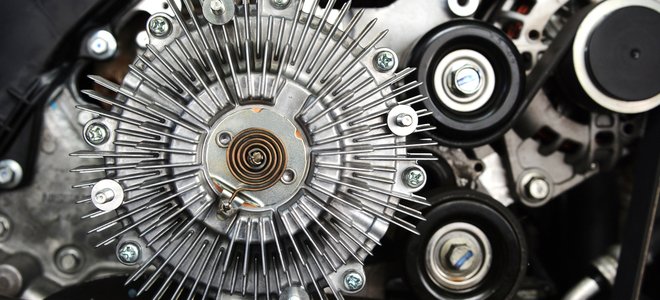
A fan clutch is an important aspect of a vehicle’s cooling system. This clutch controls the fan, which cools the engine, turning it on and off as needed. Various components determine how the fun clutch functions. Its drive shaft, which is attached to the water pump, is one. The other important is the fan clutch fluid, which is held in the fan clutch reservoir.
By controlling when the fan goes on and off, the fan clutch helps improve the fuel economy. If it’s working correctly, it only allows the fan to go on when the vehicle is overheating. When the vehicle cools down, the fan switches off but remains running on the freewheel. The fan clutch also helps reduce the drag on the engine when it’s not needed.
When Does The Fan Turn On?
The fan clutch is designed to turn on the fan when the engine’s hot and the vehicle is moving slowly. The fan should disengage when the engine is cool or when the car moves fast. At high speeds, outside air flows through the radiator, cooling the engine.
Fan Clutch Mechanics
Most fan clutches are filled with oil to enable smooth control. The oil is held within the reservoir when the fan is disengaged. When the fan has to function, the oil is pumped through the shaft.
To enhance the automatic engagement and disengagement of the fan, fan clutch oil is held inside the reservoir by valves. To engage, the valves must open, thrusting the oil into the working area. This motion creates friction between the drive plate and the housing, leading to fan motion.
If the fan is not needed, the valves close, and the fluid is stored within the reservoir. As a result, the fan stops running.

Fan Clutch Styles and How They Work
Although the general principles when it comes to the functioning of the fan clutch are the same, there are some differences based on the type of fan clutch in question.
This is where the clutch styles differ. Fan clutches can be non-thermal, thermal, or electronic. For the non-thermal clutch, the centrifugal force pushes the fluid against the valve. When the vehicle moves at low rpm, the valves are open, allowing the fluid to engage the fan. When the RMP increases, higher centrifugal forces closes the valve, and the fan disengages.
For the thermal fan, a bimetallic spring is used to sense temperature. When the engine cools, the fan disengages. Once the engine heats up, the spring moves the valve plate allowing the fluid to flow and engage the fan.
There are three categories of thermal fan:
Standard Duty
These usually turn the fan at about 60% of the water pump speed.
Heavy Duty
These are more effective. They turn the fan at about 80% of the water pump speed. This leads to better cooling of the system.
Severe Duty
As you’d expect, these are the most powerful. They turn the fan at about 90% of the water pump speed, but have a large working area. This leads to cooling for a longer time.
Finally, the electronic fan clutch works the same way as the thermal one. However, the vehicle’s computer is used in controlling the valves as opposed to the heat spring.
Keep in mind that the fan is always at work. Even disengaged, it runs on freewheel at about 20- 30% of the water pump speed. The automatic fan clutch system only keeps the fan engaged when needed and disengaged when not for fuel-efficiency.

What Type of Fan Clutch is The Best
Each vehicle typically comes with a custom fan clutch. The best fan clutch for your vehicle is one that is designed for it. If you purchase different parts for the clutch from the original ones, it will not work well. If you’re using a thermal clutch, upgrading from standard to heavy-duty clutch is okay.
Conclusion
The working principle of the fan clutch is the same whether you use the electronic or the thermal version. It all depends on the movement of the fan clutch fluid from the tank to engage the water pump. However, if you choose to replace your fan clutch, make sure you replace it with the same type.
More From Doityourself Wiring a Zone Valve What to Consider when Buying a Window Air Conditioner Bracket
Source link : https://www.doityourself.com/stry/how-a-fan-clutch-works












